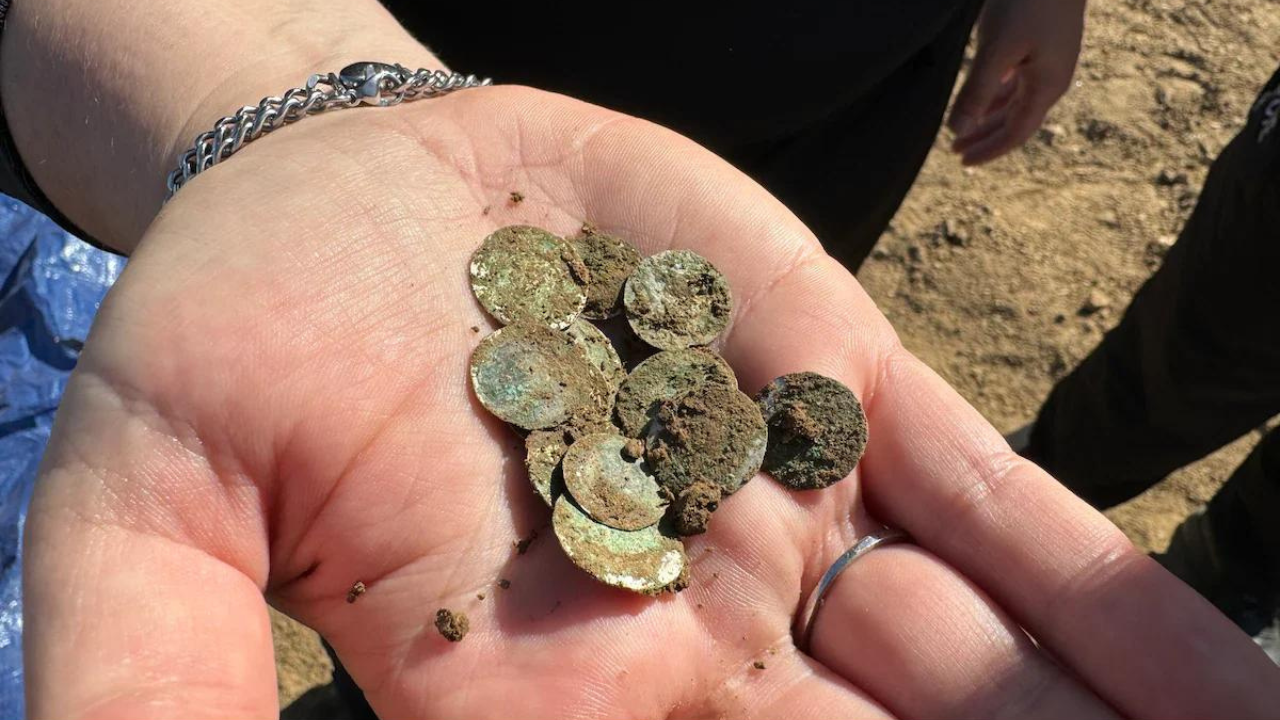NEW DELHI: A woman, while on a stroll, found more than 2,150 ancient silver coins from the Middle Ages in the Kutna Hora town of the central Bohemian region in the Czech Republic.
The experts believed that these coins were minted between 1085 and 1107 in Prague and imported to Bohemia. The Institute of Archaeology of the Czech Academy of Sciences (ARUP) described the find as a “once-in-a-decade discovery”.
According to ARUP, the coins were made of “coin alloy, which, in addition to silver, also contains an admixture of copper, lead and trace metals”. By determining the composition of the coins, experts will be able to identify the origins of the silver used in their production.
Archaeologist Filip Velimsky suggested that the treasure was hidden during a period of political instability in the region, when disputes between members of the Přemysl dynasty over the princely throne of Prague were common. ARUP stated that the depot could have been cash “for paying wages or spoils of war.”
Velimsky emphasized that the value of these ancient coins was “unimaginable” for an ordinary person during that time, comparing it to winning a million in a jackpot.
The discovery has been hailed by officials as “one of the largest finds of the last decade.” Historians have begun processing the coins, including X-raying them to determine their material composition. Plans are underway to display the coins in an exhibition next year.
The experts believed that these coins were minted between 1085 and 1107 in Prague and imported to Bohemia. The Institute of Archaeology of the Czech Academy of Sciences (ARUP) described the find as a “once-in-a-decade discovery”.
According to ARUP, the coins were made of “coin alloy, which, in addition to silver, also contains an admixture of copper, lead and trace metals”. By determining the composition of the coins, experts will be able to identify the origins of the silver used in their production.
Archaeologist Filip Velimsky suggested that the treasure was hidden during a period of political instability in the region, when disputes between members of the Přemysl dynasty over the princely throne of Prague were common. ARUP stated that the depot could have been cash “for paying wages or spoils of war.”
Velimsky emphasized that the value of these ancient coins was “unimaginable” for an ordinary person during that time, comparing it to winning a million in a jackpot.
The discovery has been hailed by officials as “one of the largest finds of the last decade.” Historians have begun processing the coins, including X-raying them to determine their material composition. Plans are underway to display the coins in an exhibition next year.
end of article

